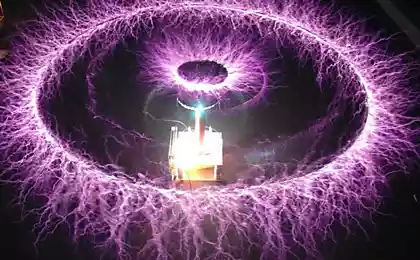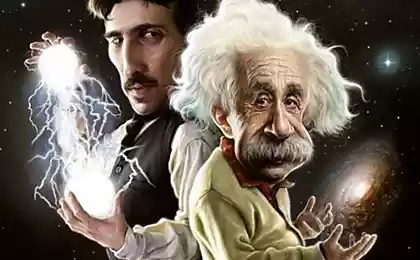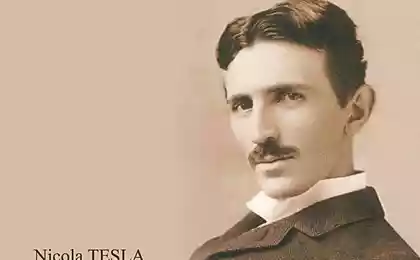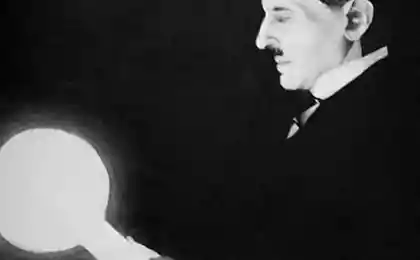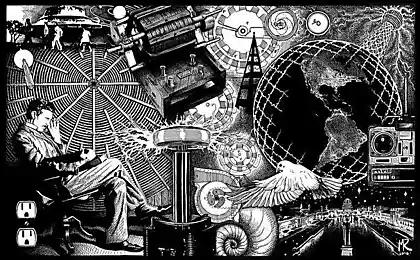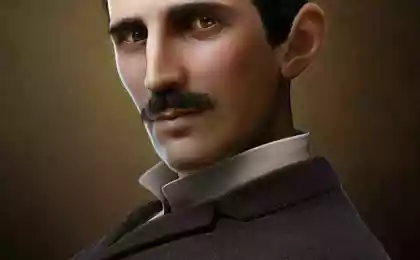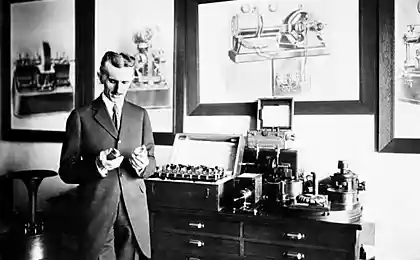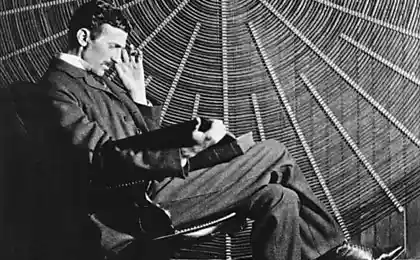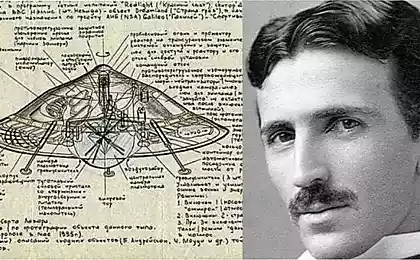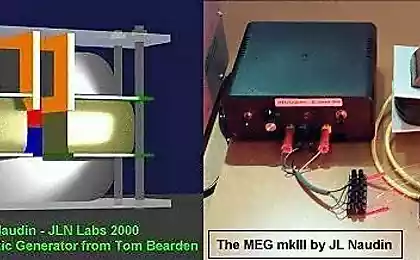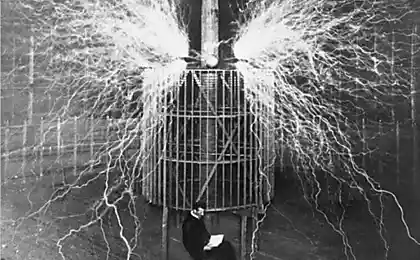1008
Nikola Tesla
In 1900, Nikola Tesla received a US patent for the technology №645 576 wireless power experiments Tesla in this field is still shrouded in mystery, and yet, in different versions, this technology is used is not the first decade. In many ways, thanks to research Greater Serbia.
In their experiments, Tesla used electrostatic induction, where the electric field created by the charge plates alternating current of high frequency and high potential. The capacitance between the two electrodes and the supplied device forms a potential difference. Electrical energy is transmitted by means of electrostatic induction, Tesla used, for example, making wireless work lamp.

But his plans were much grander - World Wireless System. Its aim Tesla saw the combination of power transmission and broadcasting directional wireless communication system that would allow to get rid of multiple high voltage power lines and sodeystvat union electrical generating globally. Here he is, of course, made haste, and the first element of the system, the tower Vonderklif and remained unfinished.
However, many people associate the phenomenon of Tunguska meteorite just with Tesla's experiments in the tower Vonderklif. According to this version, the destruction in the forest were called "short circuit" between the charged atmosphere and the ground. However, Tesla was able to convey so much energy to a distance remains a mystery.
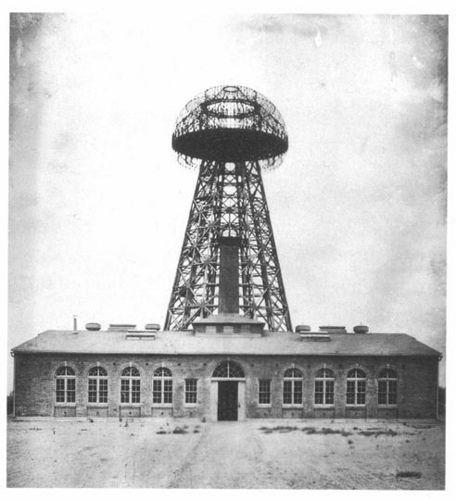
But apart from the conspiracy and return to technology, you will find a lot of interesting things:
In 1964, it demonstrated a model helicopter, which gets its power remotely - from the microwave beam.
In 1975 and 1997 successfully completed experiments on the transfer of several tens of kilowatts of power to a distance of about one kilometer.
In 2008, Bombardier has proposed PRIMOVE - a powerful system of wireless power supply for use in small-scale engines, trams and railways.
Also in 2008, Intel has successfully reproduced the experiments of Nikola Tesla in 1894, and group John Brown's 1988 wireless transmission of energy for the glow of incandescent lamps.
In 2009, a consortium of Wireless Power Consortium, announced the imminent completion of the development of a new industry standard for low-power induction chargers - the same Qi wireless charging for smartphones, which now extends to the market. In the same year, Haier Group has introduced the world's first completely wireless LCD TV, based on research by Professor Marina Solyachicha for wireless transfer of energy and a wireless home digital interface (WHDI).
In 2013, South Korea has successfully tested wireless railway system OLEV. Now it is preparing to enter the market.
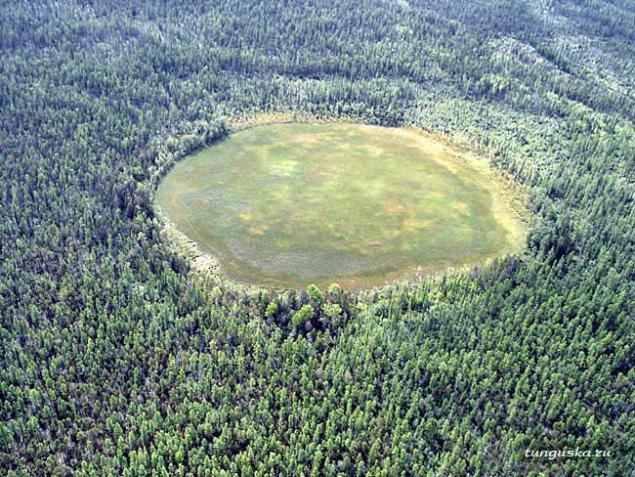
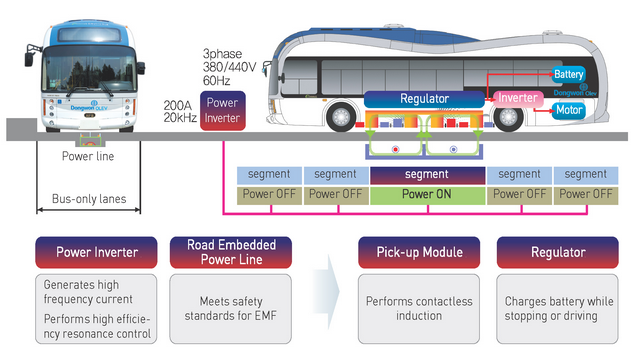
Source:
In their experiments, Tesla used electrostatic induction, where the electric field created by the charge plates alternating current of high frequency and high potential. The capacitance between the two electrodes and the supplied device forms a potential difference. Electrical energy is transmitted by means of electrostatic induction, Tesla used, for example, making wireless work lamp.

But his plans were much grander - World Wireless System. Its aim Tesla saw the combination of power transmission and broadcasting directional wireless communication system that would allow to get rid of multiple high voltage power lines and sodeystvat union electrical generating globally. Here he is, of course, made haste, and the first element of the system, the tower Vonderklif and remained unfinished.
However, many people associate the phenomenon of Tunguska meteorite just with Tesla's experiments in the tower Vonderklif. According to this version, the destruction in the forest were called "short circuit" between the charged atmosphere and the ground. However, Tesla was able to convey so much energy to a distance remains a mystery.

But apart from the conspiracy and return to technology, you will find a lot of interesting things:
In 1964, it demonstrated a model helicopter, which gets its power remotely - from the microwave beam.
In 1975 and 1997 successfully completed experiments on the transfer of several tens of kilowatts of power to a distance of about one kilometer.
In 2008, Bombardier has proposed PRIMOVE - a powerful system of wireless power supply for use in small-scale engines, trams and railways.
Also in 2008, Intel has successfully reproduced the experiments of Nikola Tesla in 1894, and group John Brown's 1988 wireless transmission of energy for the glow of incandescent lamps.
In 2009, a consortium of Wireless Power Consortium, announced the imminent completion of the development of a new industry standard for low-power induction chargers - the same Qi wireless charging for smartphones, which now extends to the market. In the same year, Haier Group has introduced the world's first completely wireless LCD TV, based on research by Professor Marina Solyachicha for wireless transfer of energy and a wireless home digital interface (WHDI).
In 2013, South Korea has successfully tested wireless railway system OLEV. Now it is preparing to enter the market.


Source:




